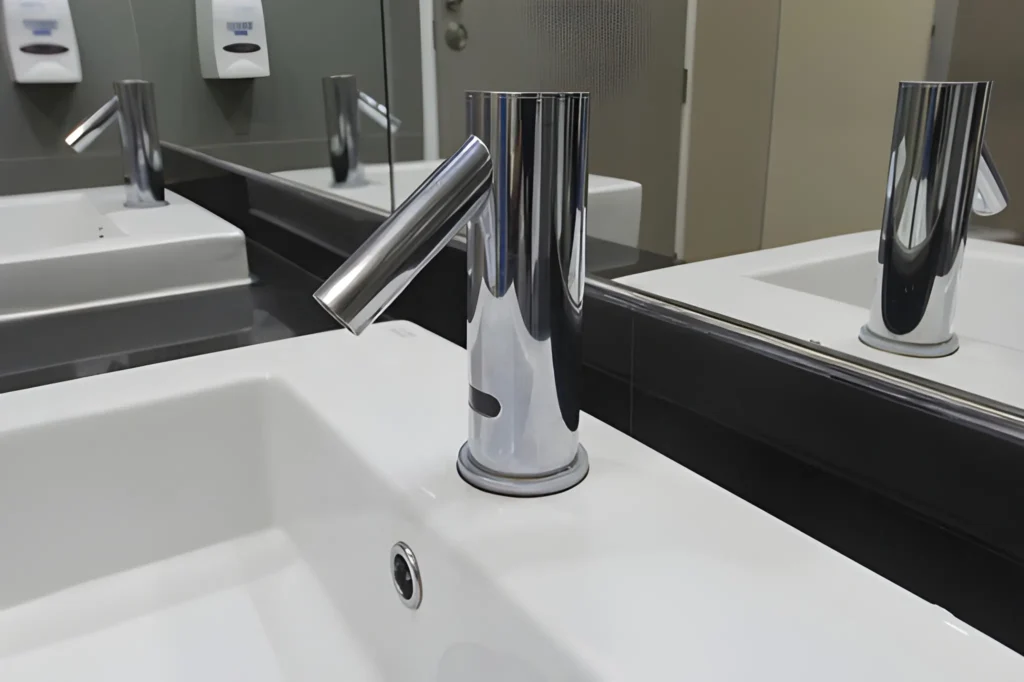You know that moment when you’re washing dishes and your hands are covered in soap, but you need to turn off the tap? Or when your kids leave the bathroom faucet running for the hundredth time this week? A sensor tap might just be the solution you didn’t know you needed. These smart fixtures use infrared technology to detect hand movement, automatically turning water on and off without any physical contact. Beyond the obvious hygiene benefits, they’re surprisingly effective at cutting water waste and making daily routines smoother.
The Technology Behind Smart Water Flow
Here’s what’s actually happening inside that sleek fixture. Most sensor taps use passive infrared sensors that detect body heat and movement within a specific range, usually about 6 inches from the spout. When you move your hands into this detection zone, the sensor triggers a solenoid valve that opens the water flow. Remove your hands, and the water stops flowing within seconds.
The really clever part is how these systems prevent accidental activation. Modern sensors are programmed to ignore brief movements or objects passing by, focusing only on sustained presence in the detection area. Some higher-end models even use multiple sensors to create more accurate detection patterns, reducing false triggers from things like cleaning cloths or utensils.
Water Conservation That Actually Adds Up
Let’s talk numbers because the water savings are more significant than most people realize. Traditional taps flow at about 2.2 gallons per minute when fully opened. With manual taps, people typically leave water running for 30-45 seconds during hand washing, even though they only need water for about 15 seconds of actual rinsing.
Sensor taps eliminate this waste by providing water only when hands are present. Studies from commercial settings show water savings of 35-50% compared to manual fixtures. In a typical household, this translates to saving roughly 3,000-5,000 gallons annually just from bathroom use. That’s not just good for the environment—it shows up on your water bill too.
Installation Realities and Power Options
Installing sensor taps isn’t as complicated as you might think, but there are some practical considerations. Most models require electrical power, either through batteries or hardwired connections. Battery-powered versions are easier to install since they don’t need electrical work, but you’ll need to replace batteries every 1-2 years depending on usage.
Hardwired models connect to your home’s electrical system, usually requiring a transformer to step down voltage to the safe 6-12V that most sensor taps use. While this means involving an electrician, you’ll never worry about dead batteries, and many models include backup battery systems for power outages.
Hygiene Benefits Beyond the Obvious
The no-touch operation does more than just feel futuristic. Research from the CDC shows that proper handwashing requires scrubbing for at least 20 seconds, but many people cut this short because they’re holding the tap handle. With sensor taps, your hands stay free for proper scrubbing technique.
Hospital studies have documented 40-60% reduction in cross-contamination when sensor taps replace manual ones. While your home isn’t a hospital, the same principle applies—especially useful during cold and flu season or when handling raw food in the kitchen.
Temperature Control and User Experience
Most people worry about water temperature control with sensor taps, but modern models handle this well. Many have adjustable mixing valves that let you preset the ideal temperature, while others include separate hot and cold sensors or temperature control handles that work alongside the motion sensor.
The user experience keeps improving too. Early sensor taps were notorious for shutting off too quickly or being overly sensitive. Current models typically include adjustable timing settings, letting you customize how long water flows after your hands leave the sensor area.
Read more: Exploring the Benefits of Advanced Laser Eye Surgery in Melbourne – Spiritual Meaning Portal
Cryptocurrencies 101: What You Should Know Before You Buy – Spiritual Meaning Portal
How to Know Whether to Sell, Donate, or Trash Your Old Furniture – Spiritual Meaning Portal







